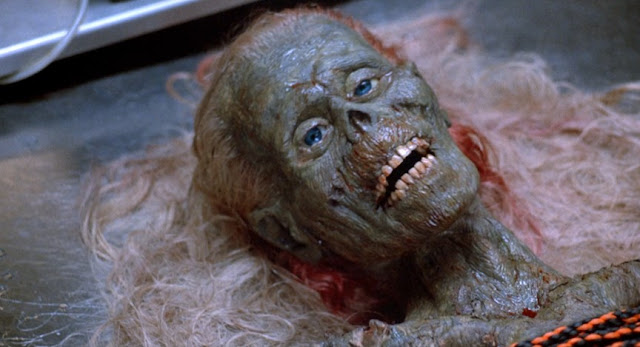
Wyrmwood is exhausting, but not necessarily in a bad way. Though its own marketing is quick to declare it as a combination of Dawn of the Dead and Mad Max, what Wyrmwood seems to owe a lot to, in spite of its vehicular zombie carnage, is From Dusk Till Dawn, a film that was so excited to circumvent expectations that the sheer audacious spectacle of it all pushed its audience to sheer fatigue by the time the Geckos were regretting their pilgrimage to the Titty Twister.
Wyrmwood takes a more restrained approach in scope, as necessitated by its budget, but the frenetic and frantic camera work, the cuts, the quick zooms, the Greengrassness of its execution - it soon becomes an entire carnival of clowns burning with neon-colored fire screaming in your face. What that overextended image means is simply: after a while, you want to scream "enough!"

Thankfully, this in-your-face motif doesn't last through to the end of the first act, but then the film runs into a new problem: going from a hyperkinetic carnage-a-thon to a slower-paced and idiosyncratic walkabout. Jokes happen, sadistic doctors dance to disco - and this in a film where a father is forced to shoot his own daughter in the face with a nail gun. It's unexpected, and the decision to do so feels like trying to appeal to every facet of the zombie-loving audience: those who love goofball humor with their undead, and those who don't.
People like to debate the effectiveness of the zombies from the Romero era versus the post-28 Days Later/MTV generation version, and which of them are superior, and on and on. This debate is generally broken down into the ol' walking versus running ghouls. But what it should be broken down to is the approach to the story - in particular, how the zombies are presented, and what purpose they serve. You'll find that the separation of the old school versus the new school becomes increasingly blurred, and after a while it doesn't matter if the undead are shambling slowly after you or doing an all-out sprint. Soon the only question that will matter is this: are the zombies being used for a purpose, or a plot device? Is there a social message at hand beneath all the face eating, or are zombies in right now so let's open that killer werewolf script you have and do a term-find/replace from one monster to the other?


The biggest hurdle Wyrmwood has to overcome is how completely oversaturated the zombie sub-genre has become. To purposely use a bad pun, the zombie thing has been done to death, and except for the minuscule population who simply can't get enough, everyone else has taken two steps way back from the whole brain-eating affair. Because horror subsists on cyclical genre, the zombie thing is a phase that will soon work itself out and fade back into the ten-dollar budget camp, where filmmakers have no agenda beyond good intentions and a story that hinges on metaphors of cannibalism and consumption rather than because zombies are "in." The slasher craze came and went - twice - as did the "torture porn" phase, which was mercifully short-lived. Zombies, too, will one day fade back away into the dark, unexplored recesses of the genre, and high school teen girls (or their moms) will stuff their Daryl t-shirts into the Goodwill garbage bag and wonder just what it was they were thinking.
Wyrmwood doesn't have a whole heck of a lot to "say," and its tonal shift from dead seriousness to smart-talkin' ironic fun doesn't necessarily come off feeling natural. That, once again, a group of survivors encounter a threat even more dangerous than the growing zombie army - that of the military who have let the power go their heads (which has been done already in 28 Days Later and Day of the Dead before it) - isn't doing the film favors. Its involvement of the Mad Max angle (another Australian production) certainly has a lot of potential to inject new life into the increasingly boring zombie sub-genre, but not nearly enough is done with it to make Wyrmwood stand out from the pack. However, given its easy watchability factor, the solid performances, and admittedly excellent make-up and visual effects, a little bit of brainless entertainment never hurt anyone.























